When going on a car camping trip, you need to bring approximately 2 gallons of water per person per day or about 7.5 liters. Bringing this much water means you should have enough drinking water, water for cooking, cleaning, and personal hygiene.
If you are backpacking, bring enough water for each day, about 64 ounces per person. Bring a water filter to refill at lakes, rivers, streams, or any other fast-moving water along your route. It reduces the amount of water you have to pack and carry.
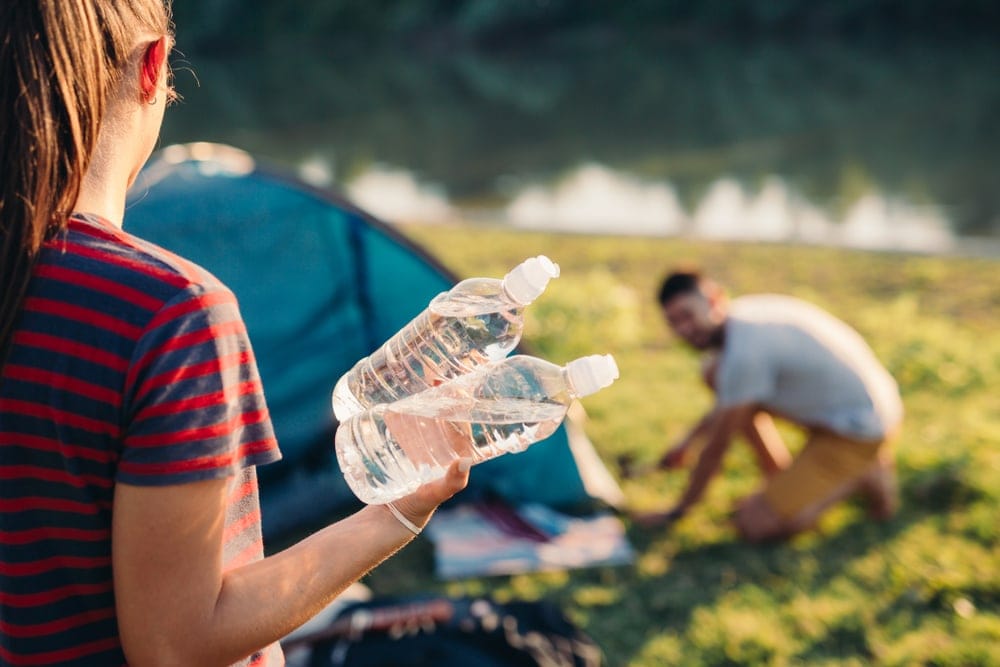
Water is one of the most important materials we need to bring with us while camping, no questions asked. Yet it can be so heavy and take up quite a bit of space.
Even if you are car camping, you don’t want to waste space and weigh your vehicle with extra water. Even worse, you don’t want to get out there and realize you don’t have enough to last your entire trip!
How much water is enough to bring on a camping trip? A good rule of thumb is to bring two gallons of water, or about seven and a half liters, per person per day of camping.
This amount might sound like a lot of water to you, but remember that it isn’t only for drinking. Keep reading to figure out how much water is appropriate for each activity on a typical camping trip.
Water for Drinking While Camping
Most experts currently agree that any healthy adult should drink approximately 64 ounces, or about two liters, of water every day.
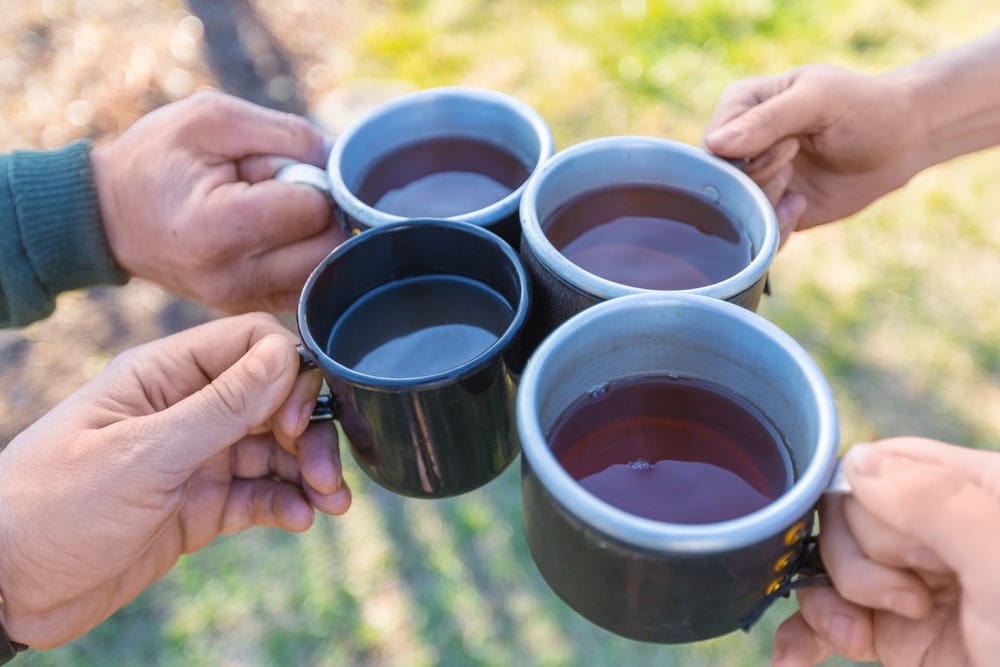
That is about half of a gallon. The recommendation is to bring at least one gallon of potable water per person per day. Why is there such a discrepancy here?
Think about the kind of activities you participate in when you camp. You are probably up on a mountain or in a valley. After setting up your campsite, you might hit the trails or go for a swim.
Most of the things we do in the outdoors require more energy than we typically expend during an average office day.
Drinking 64 ounces of water will get you through a typical day and keep everything in prime working order. However, you might need to make up for some sweating or physical exhaustion.
Before you head out on your trip, consider what you have planned and the weather. Certain things impact the amount of water you will need each day, such as:
- Consider your planned activities and the amount of exertion they will require. Even if it is cold outside and you are not sweating very much, your body is still working through your water faster.
- Climate plays a significant factor in your overall hydration. If the environment is arid and hot, you will sweat more, and your respiration rate will increase. A humid climate may also cause you to sweat more.
- Since many of us prefer a great view from our tent, we focus on higher elevation areas. The Wilderness Medical Society has stated that our bodies lose water via respiration at a high altitude twice as fast as we do at sea level. That makes a huge difference, and you need to prepare for it.
Whatever you have planned, making sure to bring enough drinking water is the primary concern. It is useful for many other things, but you and your camping companion’s hydration is the most important.
Pro Tip: If you are a car camper, do not store all of your water in one large jug with a spigot. A single hole can empty you of all your water for the trip within minutes. Spread it between medium-sized containers or multiple reusable water bottles.
How Much Water for Children?
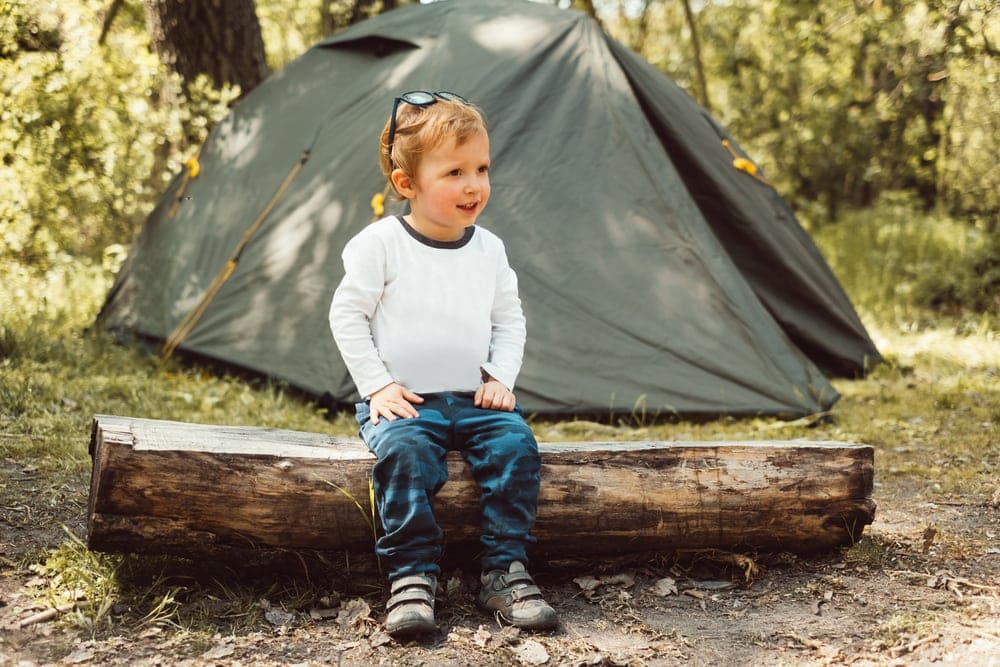
Children do not need as much water as full-grown adults do, so if you are taking a family trip and already have a full car, you won’t need to pack as much to meet your kid’s hydration needs.
As a child continues to grow older, they need more water. Kids between the ages of about 1 to 8 need about 1.3 liters per day or about 44 ounces. Kids between ages 5 to 8 should drink closer to 1.5 liters each day on average.
Remember to up that intake if they are more active on this trip than they typically are during the day at home or school.
Some kids prefer to drink something other than water, such as a sugary juice or carbonated drink. However, many of these types of liquids can actually lead to more dehydration.
Keep them safe by substituting some of their water only with beverages that keep them hydrated. If they are exercising more, give them something like Gatorade instead.
Also, remember to monitor their water intake, especially if they are younger. According to Science Alert, by the time we feel thirsty, our body has already begun to become dehydrated. The mechanism that controls our thirst always lags behind the actual hydration level in our bodies.
Kids do not often do a great job of paying attention to their thirst and level of hydration, especially if they are excited to explore somewhere new. Keep them topped up with water and plenty of reminders to keep them happy and in tip-top shape.
How Much Water for Adults?
The general amount that we had stated previously was for an adult, 64 ounces each day on an average day. Bringing a couple of water carriers that hold 128 ounces each means that you have enough for an entire group of adults on a car camping trip.
When do you become an adult in the world of dehydration?
Even though it sounds young, from the age of 13 and up is when you reach the suggested age to drink water like an adult. During this time of your life, you will not be fully grown, but your body requires more water to fuel your growth spurts and brain development.
How Much Water for Dogs?
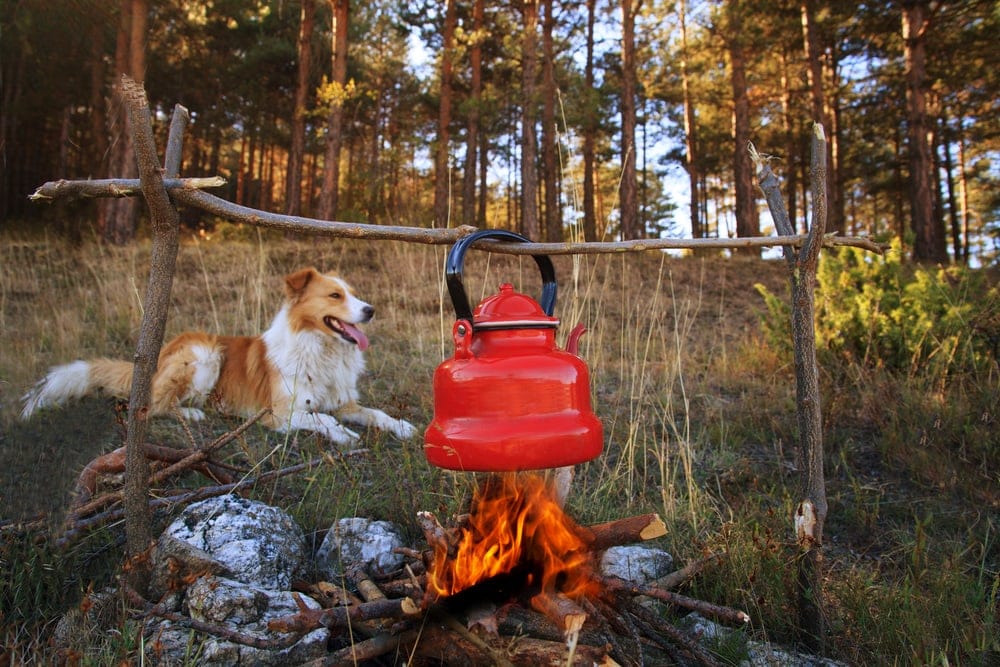
Dogs: man’s best friends. Taking your dog with you on a camping trip is always fun. It creates an excellent time for bonding, and it gets them out into free, fresh air. Many dogs appreciate the time simply to explore somewhere new.
Don’t forget about them when you pack water for the trip, though! They need to stay hydrated as well as dehydration can also negatively impact their overall health.
Since dogs vary a lot more in overall size, breed, and fitness level than humans do, their daily water needs differ much more.
Typically, you can still calculate how much they will need. On average, per each pound of bodyweight your dog has, they can drink about 0.03 liters. Whatever weight your dog is, multiply it by 0.03 to figure out how much to bring.
For example, if your dog is a medium-sized breed at about 42 pounds, they need about 1.25 liters of water each day, or 0.33 gallons. Bring extra since many breeds have sloppy drinking habits.
Water for Cooking and Cleaning While Camping
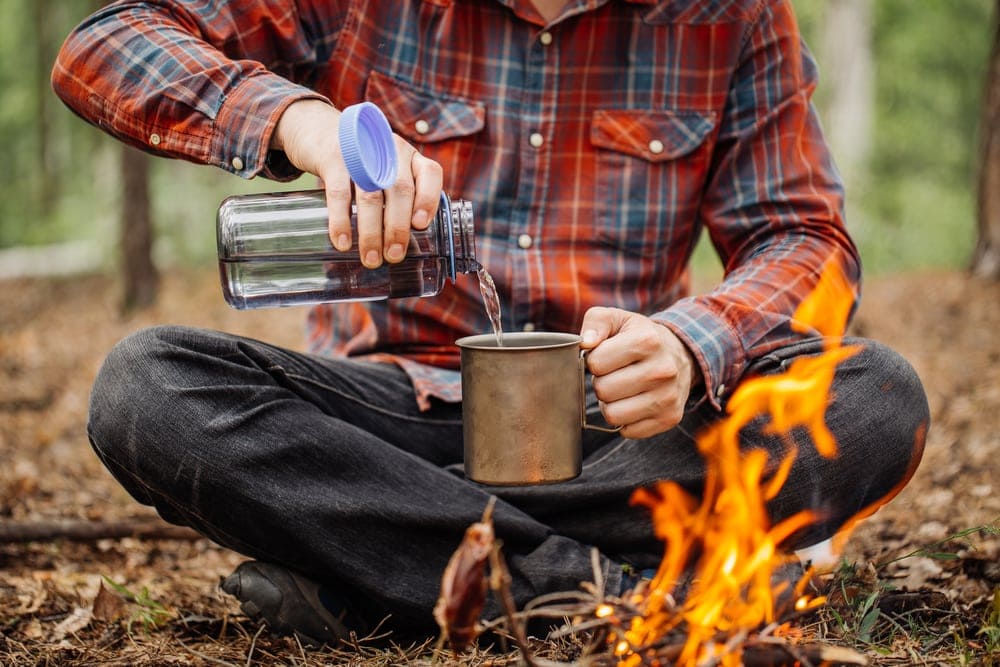
We use a surprising amount of water each day that goes beyond the amount that we drink. Even just for cooking and cleaning, we can use many gallons at home.
During a camping trip, we need to be more conservative with our water usage. There are camping food options that do not require cooking but are not filling enough. Many of our typical satiating camping meals require plenty of water to make. This cooking and cleaning supply is where that other gallon per person per day comes into play.
Obviously, it is difficult to give you an exact number of liters or gallons you need for cooking and cleaning since meals vary from person to person. Don’t forget the coffee in the morning as well!
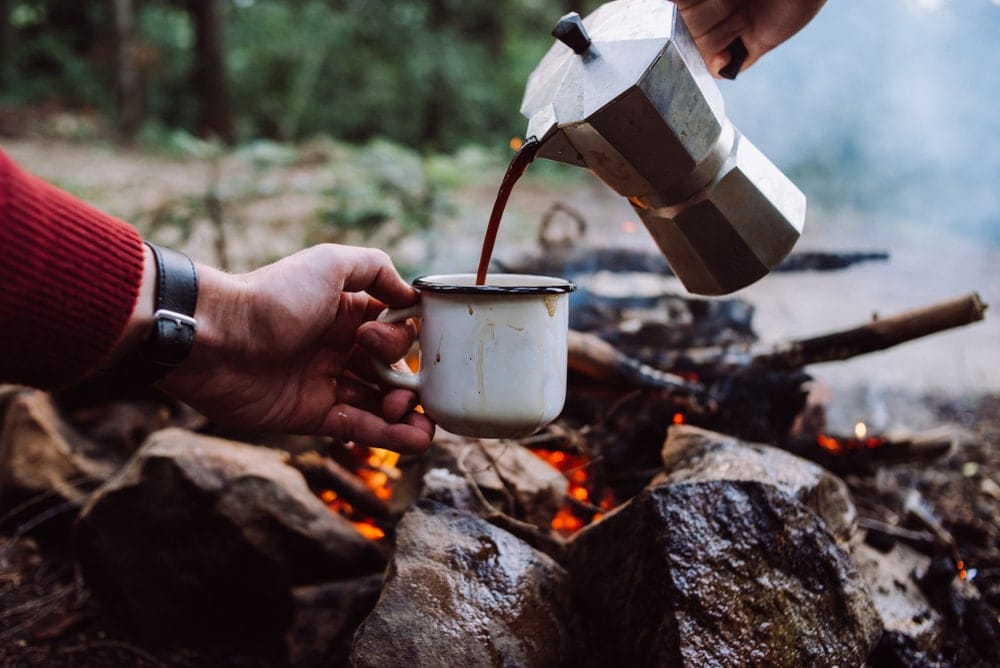
If you have a meal plan made, then calculate how much water each recipe requires and only use just enough water to get everything clean afterward.
Water for Personal Hygiene While Camping
Finally, the other main siphon on our water supply while camping is the amount you need for personal hygiene.
These kinds of things include brushing your teeth, washing your face, shaving if you care to, showering, and anything that will let you stay clean while camping.
You can completely disregard this section if you intend to access some kind of shower or toiletry area.
Many campers recommend about 72 ounces or about 2 liters of water each day per person for all of this.
Some days you won’t feel the need to use the entirety of it, but you might want a slightly longer shower on another day.
If you do not have access to a shower on any of your camping days, calculate how many showers you will want to take out on the road. Check the capacity of your camping shower to know how high you should fill it to stay on track with your daily water usage.
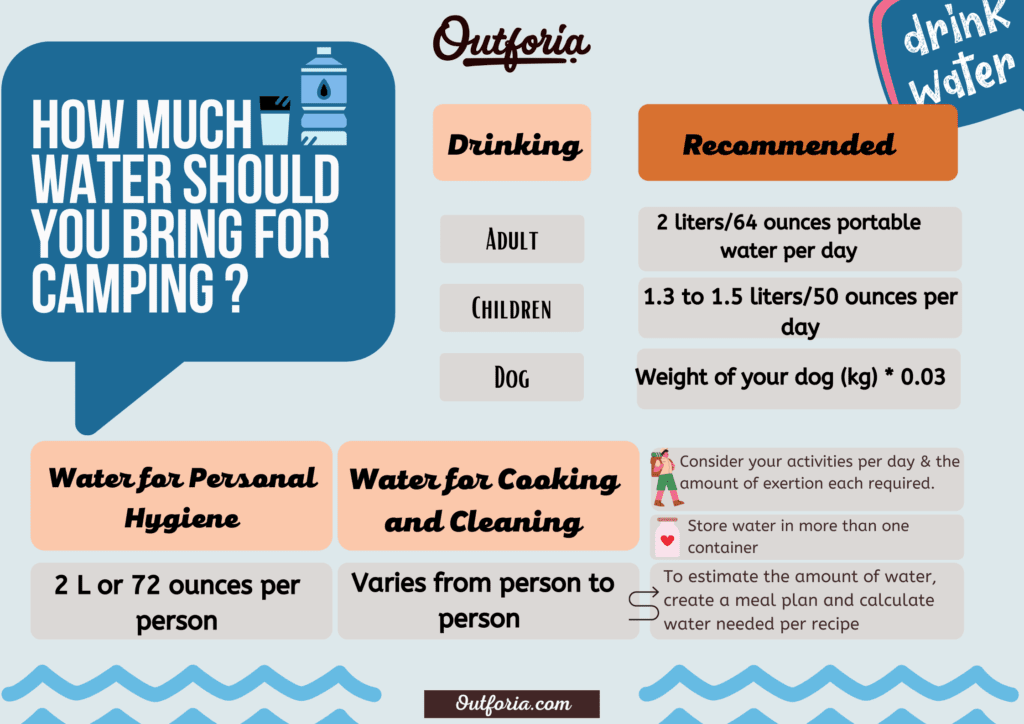
Share This Image On Your Site
<a href="https://outforia.com/how-much-water-should-i-bring-camping/"><img style="width:100%;" src="https://outforia.com/wp-content/uploads/2020/12/Dehydration-4-1024x724.png"></a><br> How Much Water to Bring Camping Infographic by <a href="https://outforia.com">Outforia</a>How Much Water Should I Bring While Backpacking?
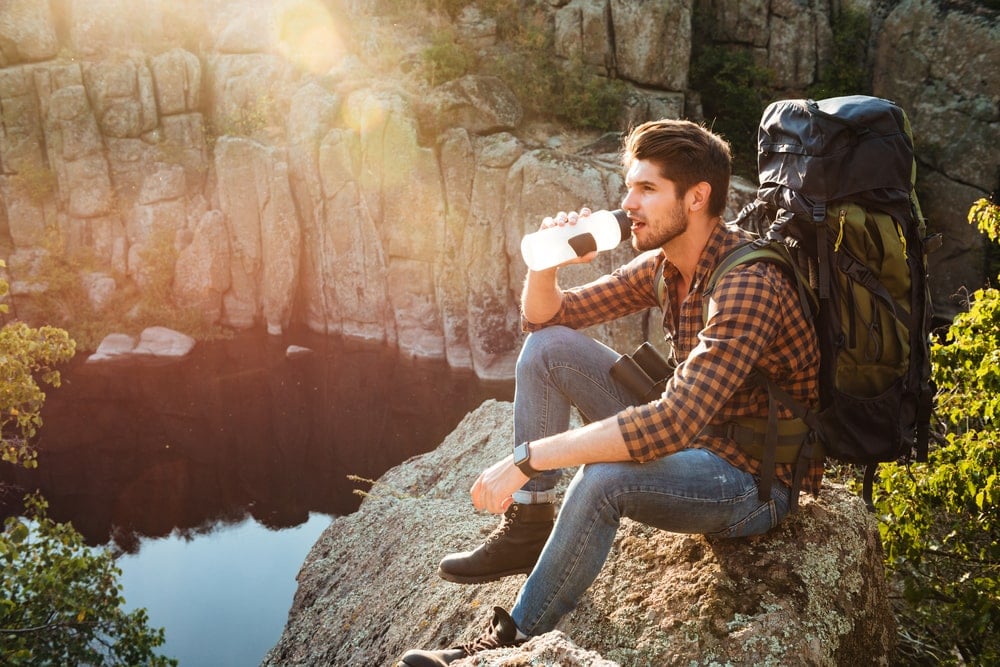
Most of the advice we have provided thus far has been for those that intend to go on a car camping trip.
But what if you want to leave the car behind and hit the wide-open trail?
Backpackers have very different requirements for how much water they carry on their trips. It varies for each trip as well.
All of the water you bring with you need to carry as a backpacker. Water is hefty as well, making it even more inconvenient. One gallon of water alone weighs over eight pounds.
The best thing to do when backpacking is assume that you need at least 67 ounces each day or 2 liters. From this point, figure out the space between your water restocking options, such as towns on the trail, or how many days you will be out.
If you are only out for a longer hike, such as a two or three-day trip, then you might be willing to carry all of that with you. If not, consider bringing a quality water filter with you.
Potential Water Sources
Bringing all of your water with you is not always the only option you have. You can also find out if you will have access to alternative water sources. Then, you will not have to pack as much of it with you.
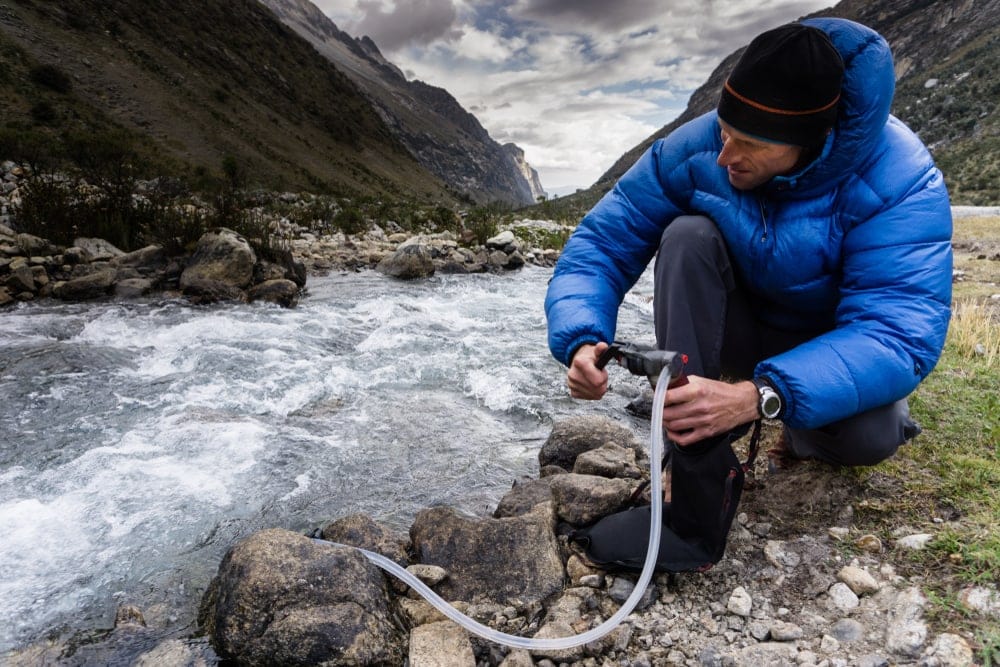
While you car camp, it is easier to find potential sources of water for camping. If you are at a campsite, they likely have a source of potable water somewhere. If it isn’t drinkable, then bring enough drinkable water and exclude water needed for washing and other things.
Even if you do not intend to park on or near a campsite, you might still have options to get water. If you drive near or through a town, you should research if they have local areas for campers to wash up. Many towns around National Parks have places that cater to these needs.
Finally, water filters aren’t only a quality purchase for backpackers. Even car campers can find streams, waterfalls, or other water sources on their stays. Using a water filter allows you to make it safe, clean, and drinkable.
If you are in a desert area, these water sources can be challenging. There are many types of deserts, and one sure thing about them is that the water source is impossible to find. In those cases, plan by strategically mapping out your course for water stock-ups in towns. If this doesn’t align with your plan, you need to pack it all before you leave.
Effects of Dehydration While Camping
Staying hydrated is essential since our bodies are made of up to 60% water. Research has shown us that even as little as 1% of dehydration harms our mood, memory, ability to pay attention, and motor coordination.
But what happens when you begin to be more than 1% dehydrated?
Symptoms of Dehydration
- Dry skin and lips
- Dark urine
- Headaches leading to migraines
- Dizzy spells
- Muscle cramps
- Fluttering or rapid heartbeat
- Increased breathe rate
- Fatigue
- Confusion
- Irritability
- Fainting
- Vomiting
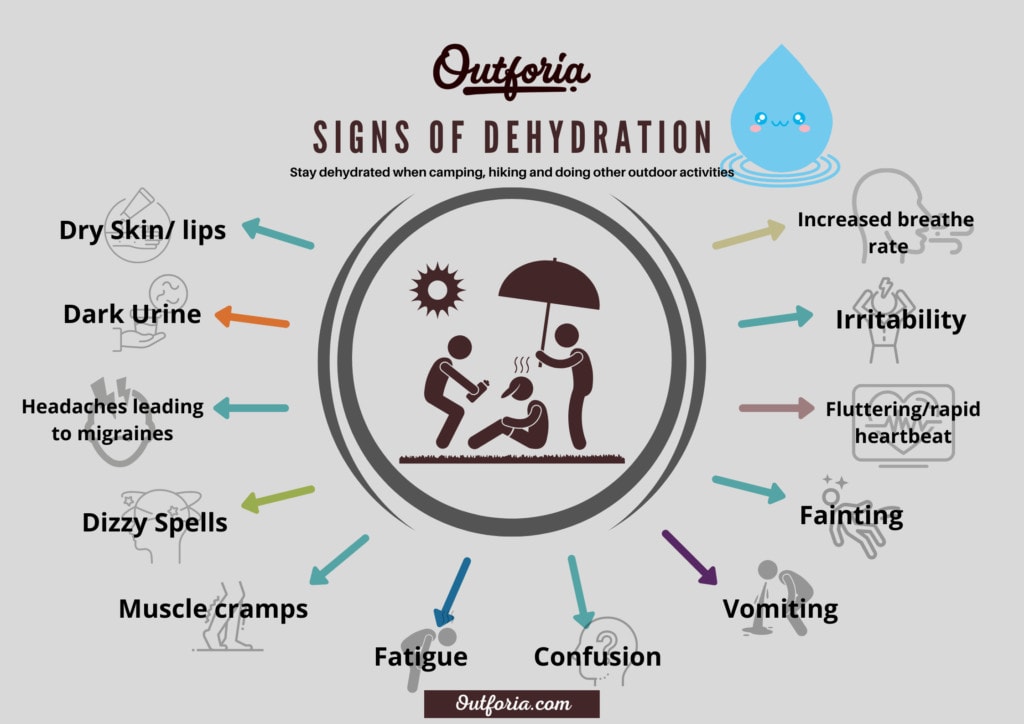
Since our bodies need water to function, you should watch the signs that show a progression of dehydration. If you know you are not drinking enough, be extra vigilant.
According to Medicine Net, the early symptoms include feeling thirsty and urinating less and then progress to a dry mouth. Then, you often begin to feel lightheaded and start to get muscle cramps.
If your heart begins to palpitate and you feel dizzy, you need to rest. You could be very close to passing out and need to place yourself in a safe area.
Do not allow dehydration ever to progress this far as it can cause longterm damage.
Conclusion
To sum up the question of how much water you should bring while camping, as an adult, you need about 64 ounces of water on an average day. If you know that you intend to hike or be very active, plan on drinking enough to stay hydrated.
Before leaving on your trip, think about all of the people and animals that will come with you. Plan accordingly for the number of adults, children, and dogs.
If you do not have access to other water sources, bring enough to accommodate drinking needs and hygiene and cooking needs.
Always store your water in more than one container so that if you break a container or a hole forms, you do not lose all of your water.
If you are backpacking or plan on longer hikes, bring only enough to drink and stay hydrated since it is heavy. Remember that once you feel thirsty, you have already begun the process of dehydration.
You can plan a route towards water sources, whether this is through towns during your trip, or nearby to rivers, waterfalls, or lakes with the help of a water filter.
Finally, be aware of the symptoms of dehydration. Keep them in mind for yourself and any other members of your party. Take them seriously since it is a slippery slope once you begin to feel dehydrated.
Bringing enough water means you are prepared with one of the most important aspects of a camping or hiking trip. Have fun, and enjoy the feeling of hydration while it helps you tackle any mountain or trail.









